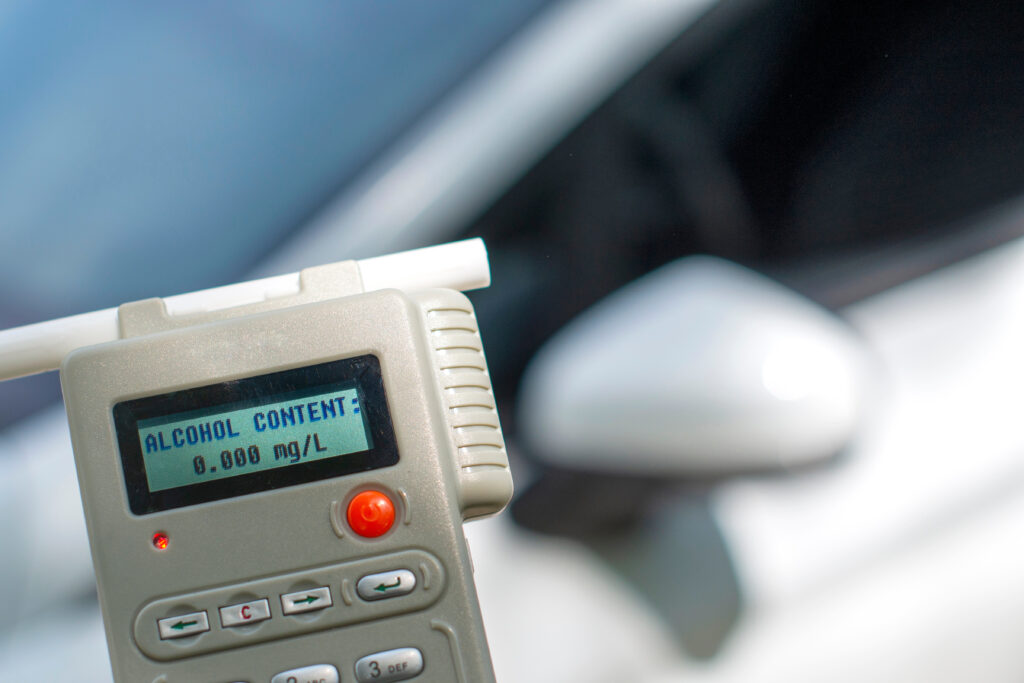You’ve likely heard it before — or, if you’ve ever been convicted of a DUI in NH, you’re probably more familiar with this acronym than you care to be. Still, for as much as we throw around phrases like “blood alcohol content” or “blood alcohol level,” not everyone knows what this designation signifies, how it’s measured, and what it implies.
Understanding Blood Alcohol Content (BAC) is crucial for anyone who consumes alcohol, especially those who operate machinery or drive vehicles. Sounds like a joke, but we’re not kidding.
BAC is simply a measure of the amount of alcohol present in a person’s bloodstream. It’s typically expressed as a percentage, with 0.08% being the legal limit for driving in many places.
What exactly does this mean, how is it measured, and why does it matter when it comes to DUI in NH?

What is BAC?
The bottomline: BAC is a measure of the concentration of alcohol in the bloodstream.
Consider our mini-biology lesson: When you consume alcohol, it gets absorbed into your bloodstream through the stomach and small intestine. From there, it circulates throughout the body, affecting various organs and systems. The more alcohol you consume, the higher your BAC becomes. Naturally. That part’s pretty simple.
Measuring BAC is a little more involved…
How is BAC measured?
BAC is most accurately measured through a blood test, where a sample of blood is taken and analyzed in a laboratory.
However, for practical reasons, law enforcement agencies often use breathalyzer tests, which estimate, rather than measure, BAC based on the amount of alcohol in a person’s breath. In NH, most law enforcement officers rely on a breathalyzer called the Intoxilyzer 5000. While breathalyzer tests are convenient, they may not always be as accurate as blood tests.
Recognizing the effects of various BAC levels
Understanding the effects of different BAC levels is essential for making informed decisions about drinking and driving, as well as for ensuring personal safety.
Take a look at the following breakdown, which shows BAC levels and their corresponding effects, symptoms, and even resulting behaviors…
- 0.02-0.03% BAC: Some effects may start to be felt, such as mild relaxation and a slight loss of inhibitions.
- 0.05-0.06% BAC: Effects become more noticeable, including impaired judgment, reduced coordination, and a decline in visual functions.
- 0.08-0.10% BAC: At this level, most people experience significant impairment in their ability to drive safely. Coordination, reaction time, and judgment are severely compromised.
- 0.15-0.20% BAC: Severe impairment sets in, with marked loss of balance, blurred vision, and difficulty speaking. Blackouts and memory loss are also common.
- 0.20-0.30% BAC: Extreme intoxication. Walking becomes difficult, and individuals may become confused or disoriented. There is a high risk of vomiting, loss of consciousness, or even alcohol poisoning.
- 0.30%+ BAC: Life-threatening levels of intoxication. Respiratory depression, coma, and death are all possible outcomes.
Remember, individual tolerance to alcohol varies, so these effects may not present exactly the same for everyone. Additionally, factors such as weight, gender, and whether alcohol is consumed on an empty stomach can influence how quickly BAC rises.
Regardless, whether you’re socializing with friends or planning to drive, knowing your limits and understanding the effects of alcohol on your body can help keep you and others safe. Remember, it’s always better to err on the side of caution and avoid drinking and driving altogether.
Always determine who will be a dependable designated driver when you’re heading out with friends. If you’re the designated driver, check out our 10 tips to help you stay in the spirit while ensuring safety for everyone in your party.
Failure to do so can result in tragedy at worst, and serious legal consequences or penalties at “best.”
We’ve been in this business long enough to recognize that things happen, even despite intentions or best efforts otherwise. That’s why we invite you to reach out with your questions and concerns about DUIs in NH.


